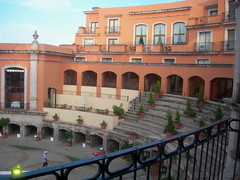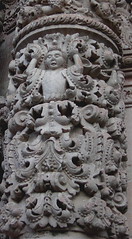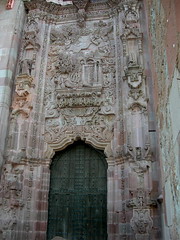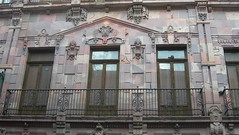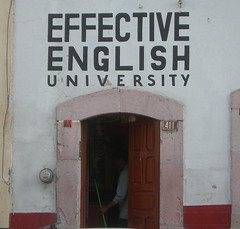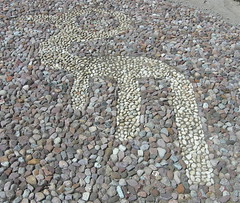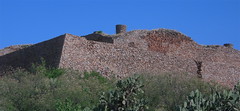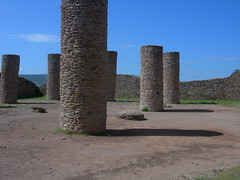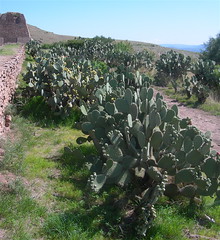Here's a video of my friend Gail taking the zipline off this same peak toward the east.
This is the cathedral in central Zacatecas:
The intricate Baroque-style carvings are made by immersing limestone in water for several weeks until it becomes soft and can be carved. Then, as it dries in the hot sun, it becomes a hard stone again.
The intricate Baroque-style carvings are made by immersing limestone in water for several weeks until it becomes soft and can be carved. Then, as it dries in the hot sun, it becomes a hard stone again.
This Catholic church building was destroyed by a Christian sect (can't remember if it was Methodists or Prysbeterians). They destroyed knocked the saints from the edifice and ruined the inside. Click the photo for a close up and you can see the niches where the saints once stood on either side above the door.
The front of the church is between these two flying buttresses:
Canterra (Spanish for any quarry stone) is the most
common building material in Mexico. It is limestone
and comes in varying colors. Here is an example of
purple or lavender canterra:
I would hope any business who charges for their services would be effective.
After lunch (see photo of the way they served beer--with a shrimp in the neck of the bottle) we set out for an archaeological site.
This is a scale replica of the site: The building on the left is the visitors center. Up the hill were the living and religious areas of the ancient inhabitants.
In the courtyard of the visitor's center was a replica of decorative rock artwork typically found at this site:
This was the large religious center. The columns supported
Here is the courtyard adjacent to the religious center and
shows the valley below the city.
The nopal cactus with fruits, mostly yellow and a few ripe red
(called tuna in Spanish or prickly pear fruit in English) growing
along the eastern edge of the city. Remember to click on any
